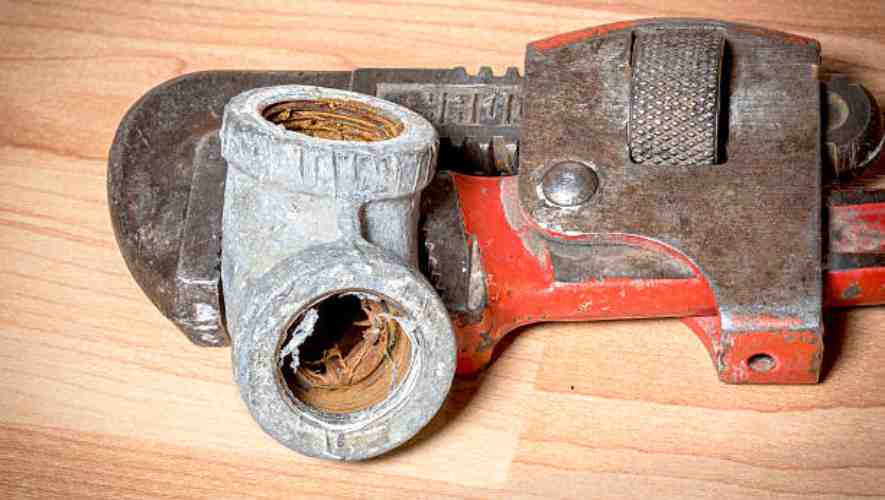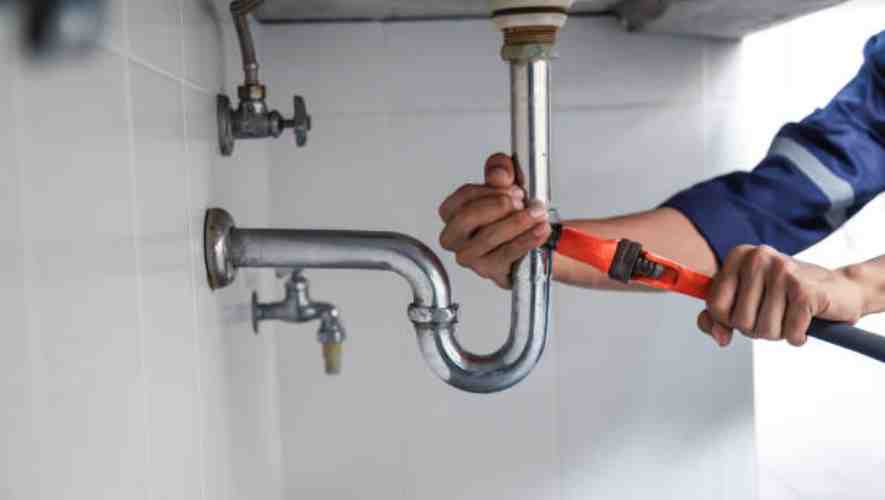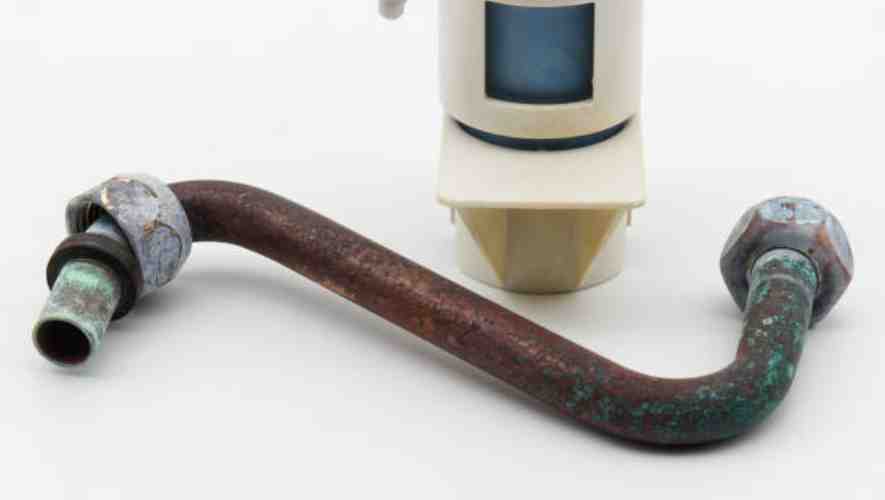When it comes to working with cast iron, a common question that surfaces among DIY enthusiasts and professionals alike is, “Can you drill and tap cast iron?” This query often arises due to the unique nature of cast iron, a material known for its durability and brittleness. Understanding whether and how you can modify cast iron is crucial for a variety of projects, from automotive repairs to custom metalwork.
Can You Drill And Trap Cast Iron? Yes, you can drill and tap cast iron, but it requires specific techniques and tools due to its brittle nature. It’s essential to use sharp tools and maintain a steady hand. Lubrication and slow speed are key factors for successful drilling and tapping, preventing cracks and ensuring precision.
As you delve into this blog, you’ll discover the intricacies of working with cast iron. We’ll explore the right tools, techniques, and precautions needed to drill and tap this material effectively. Whether you’re a seasoned professional or a curious DIYer, this guide promises to equip you with the knowledge to handle cast iron with confidence and skill. Let’s dive in and unravel the secrets of working with this challenging yet rewarding material.
Fundamentals of Drilling and Tapping

Basic Principles of Drilling
The basic principle of drilling involves the use of a rotating drill bit to remove material and create a hole. The process requires careful selection of the drill bit material and geometry, suitable for the workpiece. Factors like the drill speed,
feed rate, and lubrication play a crucial role in achieving the desired hole diameter and surface finish. Precision in drilling is not just about creating a hole, but doing so in a way that maintains the integrity of the material and meets exact specifications.
Process and Techniques
Drilling processes and techniques vary depending on the material, desired hole size, and the application’s precision requirements. Common techniques include peck drilling, where the bit is periodically retracted to remove chips, and spot drilling, which creates a guide mark for subsequent drilling.
Advanced processes like deep hole drilling and micro-drilling cater to specific industry needs, requiring specialized equipment and expertise. Each technique has its nuances, and the choice depends on factors like the workpiece material, hole depth, and tolerance requirements.
Tools and Equipment Used
The tools and equipment used in drilling and tapping are diverse and specialized. Drills range from hand-held electric drills for simple tasks to sophisticated CNC (Computer Numerical Control) machines for high precision work.
Drill presses offer more control and stability for repetitive tasks. Tapping tools include hand taps, tap wrenches, and advanced tapping attachments for machine tools. The selection of tools depends on the project’s complexity, the material being worked on, and the precision required.
Tapping Techniques
Tapping techniques are critical for creating threads inside a drilled hole. The approach varies based on the material hardness, thread size, and the application’s precision requirements.
Hand tapping is suitable for softer materials and smaller volumes, while machine tapping is used for harder materials and large-scale production. Each technique requires careful alignment and speed control to ensure thread accuracy and prevent tap breakage.
Definition and Purpose of Tapping
Tapping is the process of cutting internal threads in a pre-drilled hole to accommodate screws or bolts. This technique is essential in many manufacturing processes, allowing for the assembly of parts with a strong, removable connection.
Tapping can be done on various materials, including metals, plastics, and wood, making it a versatile process in both industrial and craft applications. The purpose of tapping is to provide a method of joining components securely and efficiently.
Manual vs. Machine Tapping
Manual versus machine tapping is a choice influenced by the scale, precision, and nature of the project. Manual tapping, done with a tap and a suitable wrench, offers simplicity and control for small-scale or delicate work.
It requires skill and patience, particularly in maintaining alignment and avoiding cross-threading. Machine tapping, on the other hand, is faster and more consistent, ideal for large-scale production. CNC machines offer unparalleled precision, automating the tapping process and reducing the likelihood of errors. The decision between manual and machine tapping hinges on the specific requirements of the job at hand.
Preparatory Steps for Drilling and Tapping Cast Iron

Material Analysis
Understanding the specific type of cast iron is essential in drilling and tapping. Cast iron, known for its durability and brittleness, comes in various forms like gray, ductile, and malleable iron. Each type has distinct properties that affect machinability.
Gray cast iron, for instance, contains graphite flakes that make it self-lubricating but weak in tension, while ductile iron offers better strength and flexibility. Recognizing these characteristics ensures the selection of appropriate tools and techniques, preventing damage to both the material and the equipment.
Assessing Material Condition
The condition of the cast iron plays a crucial role in the success of drilling and tapping operations. Prior to beginning, it’s vital to examine the material for any signs of wear, cracks, or structural inconsistencies.
Such imperfections can greatly impact the integrity of the drilling process and the final thread quality. Ensuring the material is free from contaminants such as rust or dirt is also crucial, as these can hinder tool performance and affect the accuracy of the drill and tap alignment.
Tool and Equipment Selection
Choosing the right drills and taps is critical for achieving precision and efficiency in working with cast iron. Drills should be made of high-speed steel or cobalt to withstand the hardness of cast iron, while taps need to be sharp and robust to create clean, accurate threads.
The selection of tools also depends on the specific type of cast iron and the nature of the job – whether it requires coarse or fine threads, deep or shallow holes. Proper tool selection minimizes the risk of breakage and ensures a smoother machining process.
Importance of Tool Quality and Suitability
The quality and suitability of tools are paramount in drilling and tapping cast iron. High-quality tools reduce the risk of chipping or breaking, which is important given the brittle nature of cast iron.
Tools need to be specifically suited for cast iron to handle its abrasiveness and hardness effectively.. The use of suitable lubricants or coolants is essential to prevent overheating and to maintain the longevity of the tools. Investing in the right tools and accessories not only enhances efficiency but also ensures safety during the machining process.
Drilling Process in Cast Iron

Step-by-Step Drilling Guide
Preparation
Begin by securing the cast iron piece firmly to prevent any movement during drilling. Select the appropriate drill bit for the diameter and depth of the hole required.
Marking
Clearly mark the drilling point on the cast iron surface. This can be done using a center punch to create a small indentation, ensuring the drill bit does not wander.
Drilling
Start drilling at a low speed to establish the hole, increasing speed as needed. Apply steady, moderate pressure without forcing the drill.
Cooling and Finishing
Continuously lubricate the drill bit with cutting oil to keep it cool. Once the hole is drilled, remove any burrs or rough edges with a deburring tool for a clean finish.
Tips for Effective Drilling
Right Tools
Always use sharp, high-quality drill bits designed for metal. Dull or inappropriate bits can damage both the tool and the workpiece.
Lubrication
Regularly apply cutting oil or a suitable lubricant to reduce heat and friction. This extends the life of the drill bit and improves the quality of the hole.
Steady Pace
Maintain a consistent drilling speed suitable for cast iron. Avoid rushing the process as it can lead to inaccuracies and tool damage.
Regular Breaks
Take breaks to allow the drill bit to cool down and to clear any accumulated chips or shavings from the hole.
Challenges and Solutions
Challenge
One common challenge in drilling cast iron is managing the brittle nature of the material, which can lead to cracking or chipping.
Solution
To mitigate this, use sharp drill bits and maintain a steady drilling speed. Avoid applying excessive force and ensure the workpiece is securely clamped.
Common Difficulties Encountered
Bit Breakage
This often occurs due to excessive pressure or using a dull bit.
Overheating: Caused by insufficient lubrication or too high a drilling speed.
Surface Damage
Improper handling or tooling can lead to scratches or deformations on the cast iron surface.
Strategies to Overcome Challenges
Regular Inspection
Frequently inspect drill bits for wear and replace them as necessary.
Optimal Speed and Pressure
Find the balance in drilling speed and pressure to avoid overstressing the bit and the material.
Proper Setup
Ensure that the cast iron is clamped securely and the drilling area is well-prepared to minimize the risk of accidents or material damage.
Patience and Precision
Approach the drilling process with patience, focusing on precision and control rather than speed, to achieve the best results.
Tapping Process in Cast Iron

Detailed Tapping Procedure
The tapping procedure in cast iron begins with selecting the appropriate tap size and type, considering the hole’s diameter and the desired thread pitch. Drilling the pilot hole is the first critical step, and it must be of the right size to accommodate the tap.
Lubrication is essential in this process; a suitable cutting fluid reduces friction and prevents tap breakage. The tap is then carefully aligned with the hole and turned with consistent, moderate pressure to create clean and precise threads.
Step-by-step guide to tapping
Selection: Choose the correct tap size and type for your cast iron piece, considering the thread size and depth.
Drilling: Drill a pilot hole, ensuring it’s perpendicular to the surface and matches the tap’s diameter.
Lubrication: Apply a suitable cutting fluid to reduce friction and heat build-up, prolonging the tap’s life.
Tapping: Align the tap accurately with the hole, and turn it with steady pressure. Use a tap wrench for better control and to avoid misalignment.
Techniques for Precision and Accuracy
Precision and accuracy in tapping cast iron are achieved through controlled speed and pressure, ensuring the tap cuts threads without slipping or binding. Utilizing a tap guide can ensure perpendicular alignment,
crucial for thread integrity. Regular inspection of the tap for wear and damage is essential to maintain precision. Employing a starting tap followed by a bottoming tap can enhance thread depth accuracy, in blind holes.
Troubleshooting Common Issues
Common issues in the tapping process include tap breakage, thread misalignment, and incomplete thread formation. Tap breakage often results from excessive force or inadequate lubrication, while misalignment can occur due to improper starting of the tap.
Incomplete threads are typically a result of incorrect tap size or depth setting. Addressing these issues promptly involves careful examination of the tap and the workpiece, along with adjustments to technique and tool selection.
Identifying and Resolving Problems during Tapping
Effective problem-solving in tapping cast iron starts with identifying the issue, whether it’s a damaged thread, a stuck tap, or an uneven threading pattern.
Once identified, solutions might include using extraction tools for broken taps, recalibrating the tap alignment, or adjusting the tapping speed and pressure.
Regular maintenance of tapping tools and adherence to best practices significantly reduce the likelihood of these problems.
Preventive Measures
Preventive measures in tapping cast iron include regular maintenance of tapping tools, correct storage to prevent rust and damage, and ongoing training in best practices.
Using high-quality taps and appropriate lubricants tailored for cast iron can significantly reduce wear and tear. Conducting a pilot test on a scrap piece before tapping the actual workpiece helps identify potential issues and ensures a smoother tapping process.
Conclusion
In conclusion, drilling and tapping cast iron is indeed possible, but it demands a careful and knowledgeable approach. Employing the right tools, maintaining a slow drilling speed, and using proper lubrication are vital to achieving success without damaging the material.
Remember, patience and precision are your best allies when working with cast iron. Ensure your tools are sharp, work slowly, and use lubrication. These steps will help you achieve clean, precise threads and holes in cast iron, enhancing your projects’ quality and durability.
As you embark on your next cast iron project, keep these tips in mind. With the right approach, you can successfully navigate the challenges of this material, leading to satisfying and high-quality results. Happy drilling and tapping!

